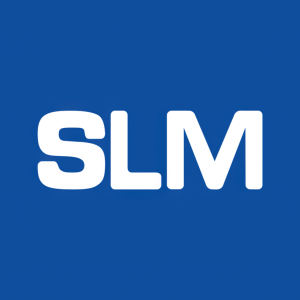Sallie Mae Declares Dividends on Preferred Stock Series B and Common Stock
- None.
- None.
Insights
The announcement of Sallie Mae's first-quarter dividend for both Preferred Stock Series B and common stock is a significant indicator of the company's current financial health and its commitment to returning value to shareholders. The dividend payout, particularly the $1.8552246 per share for Preferred Stock Series B, suggests a robust income stream that enables the company to distribute a substantial return to its preferred shareholders. This is an important consideration for investors, as preferred stock dividends are typically higher than common stock dividends and are paid out before common stock dividends.
Moreover, the common stock dividend of $0.11 per share reflects the company's confidence in its ongoing operations and its ability to generate sufficient cash flow. Investors often view regular dividend payments as a sign of a company's stability and maturity and they may be perceived as a safe investment, especially in volatile markets. It is also indicative of management's assurance in the company's liquidity and financial strategy.
For stakeholders, the short-term benefits include the immediate income from the dividend payout, while the long-term implications may involve sustained or increasing dividend payouts as a result of continued financial performance and growth. However, investors should also consider the payout ratio and whether the dividends are sustainable in the long run without compromising the company's growth potential or financial stability.
The dividend announcement by Sallie Mae can also be seen as a strategic move to maintain investor interest and support the company's stock price. From a market perspective, consistent dividend payments can make a company's stock more attractive to income-focused investors, potentially increasing demand for the stock. The specific timing and consistency of these payments are essential factors that contribute to the overall investor sentiment towards the company.
Analyzing the education financing sector, Sallie Mae's role as a prominent player in private student lending is crucial. The company's performance and by extension its dividend payouts, are likely influenced by the macroeconomic factors affecting education financing, such as student loan interest rates, college enrollment rates and the regulatory environment. Any shifts in these areas could impact the company's profitability and its ability to maintain or increase dividend payments.
Additionally, it's important to consider the competitive landscape. As Sallie Mae asserts its position in the market, its financial strategies, including dividend policies, can affect its competitive edge. Investors and analysts should monitor industry trends and compare Sallie Mae's dividend yield and growth to its peers to assess the relative investment attractiveness.
From an economic standpoint, Sallie Mae's dividend payout must be evaluated against the backdrop of the broader economic climate. Factors such as inflation rates, interest rate trends and economic growth can influence the company's business model, which is centered around private student lending. In a low-interest-rate environment, for instance, borrowing costs decrease, potentially increasing the demand for student loans. Conversely, if interest rates rise, the cost of borrowing could deter potential borrowers, impacting Sallie Mae's core business and possibly affecting future dividends.
Furthermore, the state of the job market plays a role in the demand for student loans, as individuals may seek higher education to improve their employment prospects during economic downturns. Sallie Mae's dividends may reflect the company's anticipation of these economic shifts and its preparedness to navigate them.
Investors should also consider the impact of economic cycles on Sallie Mae's business. During periods of economic expansion, higher college enrollment may lead to increased demand for loans, while during recessions, the company may face higher default rates. These cyclical factors can influence the sustainability of dividend payments and the company's long-term growth trajectory.
Both preferred stock and common stock dividends will be paid on March 15, 2024, to the respective stockholders of record at the close of business on March 4, 2024.
Sallie Mae (Nasdaq: SLM) believes education and life-long learning, in all forms, help people achieve great things. As the leader in private student lending, we provide financing and know-how to support access to college and offer products and resources to help customers make new goals and experiences, beyond college, happen. Learn more at SallieMae.com. Commonly known as Sallie Mae, SLM Corporation and its subsidiaries are not sponsored by or agencies of
Category: Corporate and Financial
View source version on businesswire.com: https://www.businesswire.com/news/home/20240123890854/en/
Media:
Rick Castellano
302.451.2541
Rick.Castellano@SallieMae.com
Investors:
Melissa Bronaugh
571.526.2455
Melissa.Bronaugh@SallieMae.com
Source: Sallie Mae







